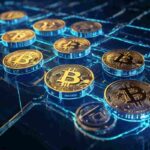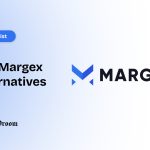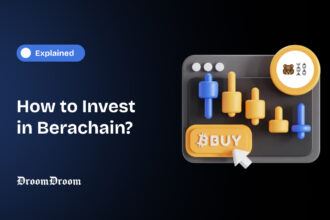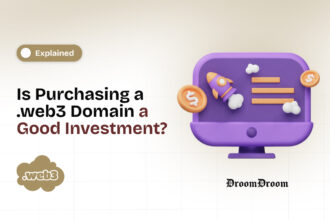Safeguarding wealth in real-world asset tokenization is essential. Let’s look beyond the hype at what makes a suitable real-world asset and how to pick one when scouting for bankable investments.
Factors to look for when safeguarding wealth in real-world asset tokenization include economic viability, immutability, proof of reserves, transparent off-chain and on-chain metrics.
Traditional finance giants everywhere believe real-world asset tokenization is the start of a revolution and are excited to record ownership of high-value assets like art, property, precious metals and so much more on the blockchain.
This guide will equip you with insights into the active measures by forward-thinking investors to safeguard their wealth in an era where traditional asset classes are being redefined.

The Impact of Real-World Asset Tokenization
Take into perspective the idea of purchasing a Picasso painting for approximately $1M. Many of us cannot afford it for ownership, and even if we wanted to invest in the piece, the price would have already faced us out. Real-world art tokenization has made it possible for anyone to buy the share of such a piece through publicly available fractional units. This is the concept behind real-world asset tokenization.
The Picasso painting is not just an example for illustration purposes but an actual use case of Artfi, a technology company that aims to fractionalize the multi-trillion dollar art sector into convenient tradable shares that can be purchased via an open NFT marketplace.
The main concept behind real-world asset tokenization is creating a digital investment vehicle on a decentralized ledger for tangible assets such as fine art, property, commodities, equity offerings, and more.
Instead of representing the title deed to a house on a physical piece of paper or on a centralized database at the ministry of land, a company represents the ownership of the asset onhain. Through on-chain ownership representation, two parties can directly trade or even fractionalize the ownership for exchange across multiple parties.
Things to Look for When Investing in RWAs
Practicality
Many see tokenization as a viable option for financial institutions and investment firms who want to increase efficiency by leveraging blockchain capabilities. A suitable real-world asset is one that is economically viable for everyone that wishes to participate.
Thanks to the blockchain, entrepreneurs and businesses can tokenize physical assets to make them easily transferable, reduce third-parties, speed up settlements, increase liquidity, and cut transactional costs.
However, not all assets are viable for tokenization. As RWAs continue gathering traction and market momentum, some actors are implementing the term as a buzzword for incompetent Examples of tangible real-world assets for tokenization include precious gold, real estate property, commodities, fine art, vintage cars, among others.
Proof of Reserve
Proof of Reserve allows reliable and timely tracking of the assets backing onchain tokens. Certifying proof of reserves for tokenized real-world assets demands transparency on part of the tokenization blockchain. Ensure you consider transparent proof of reserves when looking for viable RWAs for investment.
Secure Custodial Solutions and Management
Custodial Solutions in RWAs define the safekeeping and management of tokenized assets on behalf of their owners. The asset held under custody could be a real estate property, a land, a precious metal mine, an investment fund, or an artwork. A custodian could be a bank, art gallery, a financial institution or specialized custodial companies. Some custodial services may offer additional solutions such as asset management, trade settlement, asset servicing and reporting. When identifying a suitable RWA for investment, pick one with impeccable custodial services.
Transparent Onchain Metrics
Always pick an RWA with transparent onchain metrics to derive reliable insights such as usage, adoption, demand and overall quality. Crucial onchain metrics include transaction volumes, pricing metrics, transaction count, past ownership, and so on. These metrics may come in handy when attempting to figure out the value of the art, determining collateralization ratios during lending or when assessing risks. Therefore, it is crucial for investors to pick real-world assets with accessible and transparent onchain metrics.
Offchain Metrics: Reputation, Backing and Partnerships
Offchain metrics refer to attributes of a real-world asset that exist outside the blockchain. Examples of such metrics include social media sentiments, reputation, backing and partnerships. Evaluating these metrics could play a role when assessing the value, credibility, perfomance and reputation of real-world assets. Hence, it is worth it to pick a real-world asset that has transparent offchain metrics.
Case Study: Artfi
Practical Real World Asset Tokenization
The asset in question when tokenizing real-world assets should be valuable and practical for it to qualify for investment. When assessing practicality, consider factos like regulatory compliance and economic viability. Artfi is one of the most viable business models that centres around a practical and tangible real-world asset – fine art.
Proof of Reserve
Artfi only picks high-value artworks of impeccable provenance. After purchasing the art from sellers or galleries, Artfi secures it for custodial at the Artfi Museum in Dubai.
Accessible Onchain and Offchain Metrics
Finally, Artfi wants every process, transaction, settlement, buyer, seller and ownership records to be transparent on a public blockchain. This means interested participants can access onchain and offchain metrics at their convenience.
Real-world asset tokenization represents a transformative leap in investment paradigms, democratizing access to traditionally exclusive markets like fine art. By fractionalizing these assets on the blockchain, we not only enhance liquidity and facilitate faster settlements but also introduce a new level of transparency and security, unheard of in conventional asset management. This technology is not just about creating investment opportunities; it’s about reshaping the very fabric of asset ownership and wealth distribution, making it more inclusive and efficient for a global audience.
Asif Kamal, the founder & CEO of Artfi
Conclusion
Safeguarding wealth in real-world asset tokenization is crucial. While is has several benefits from increasing liquidity to enhancing settlement, ensuring transparent onchain management, providing room for accountability to enabling fractional ownership. It is imperative to not be carried away with the hype.
Remember that blockchain transactions take less time to settle compared to traditional payments which may take upto 3 business days. This speed, and room for liquidity drives efficiency and also enables average investors to participate in investments that would otherwise have not been possible for them.
Furthermore, the blockchain streamlined the distribution, trading, accessibility, custodial and security processes into one layer, therefore reducing counterpart risks and lowering costs of operation.
Presently, the future is bright for tokenization with forecasts claiming the real-world asset tokenization sector could mature upto $16 trillion by 2030.




















